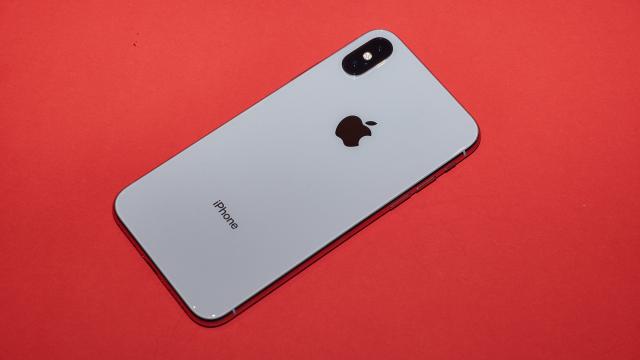I’ve now had the iPhone X for just 24 hours – the majority of which have been spent trying to break Face ID. For the most part, Face ID has worked as described – opening my phone when I’m sitting in the dark, or wearing a variety of glasses. It works whether my hair is up, down, or in my face. But today, while shooting a Facebook Live illustrating the technology, I managed to kind of break Face ID.
Image: Alex Cranz/Gizmodo
First of all, I wanted to know whether Face ID would work when my eyes are closed. It isn’t supposed to – it tracks the movement of your eyes using its combination of infrared light and cameras to make sure you’re actually there and paying attention. Only I had no problem opening the phone while my eyes were closed. A colleague even managed to open the phone using my face while I feigned sleep. (See in the video below at about the 16 minute mark.)
As for what might have happened for Face ID to fail to recognise me in several instances, I have a theory that relates to the specific combination of factors I used in my attempt to break Face ID.
The first component is of my theory is my genetics. I have hooded eyes that can look closed when I smile, so Face ID may struggle to understand what’s a grin and what is slumber.
The second is related to my glasses. Face ID has struggled to track my eyes through my glasses, which happen to have a UV protective layer. Apple has said that some forms of UV protection on glasses can affect Face ID. So wearing these glasses might contribute to Face ID’s struggle to read my face.
And the final component was the makeup I applied during the Facebook Live. It’s a very heavy foundation that flattened my face on camera, and it also lists titanium dioxide amongst its ingredients. Titanium dioxide is a noted ingredient in many types of sunscreen and actually reflects infrared light. Which means the makeup functions as a double whammy, preventing infrared lasers from accurately measuring the depth of markers on my face, and the camera can’t use its algorithms to make an approximate depth map of my face because the makeup severely flattens things out.
Face ID did eventually recognise me after a few tries with the makeup on. Yet when the makeup was combined with my glasses and my naturally hooded eyes, it seemed to be a recipe for Face ID failure.
We’ve reached out to Apple about our experience, and we were told the company is investigating.
